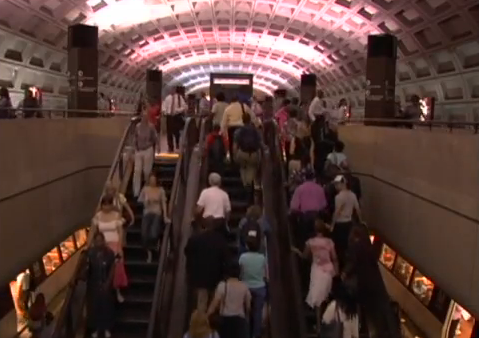
Metro Unveils Next Generation Plan (Video)
Metro’s management has presented the Board of Director’s Governance Committee with a staff draft of the Authority’s strategic plan, called Momentum, which defines the next generation of Metro.
While Metro is currently going through a multi-year capital rebuilding effort to bring the system into a state of good repair, the agency must simultaneously begin planning for expansion to help ensure the long-term competitiveness of the National Capital Region and keep pace with demand from expected population growth.
“Our customers know that many trains, stations and buses are already crowded and we need to begin planning now to prevent that from worsening and prepare for more riders,” said General Manager and CEO Richard Sarles. “As the jurisdictions plan various expansion projects, we also need to make sure that we have a seamless, multimodal, transit network and Metro is in a unique position to serve as the transit planner for the national capital region.”
To help identify the top priorities for action to its customers and stakeholders, Metro conducted unprecedented public outreach, that gathering direct feedback from more than 10,000 people and raised awareness among millions. Specific outreach tactics included crowd sourcing tools, online surveys, print advertising, email to Metro customers, deliberative forums, and meetings with community and business organizations. More than 3,000 riders voiced their opinions through an online survey over a 30-day period. The majority noted the importance of Metro in their decision-making to move to the Washington Metro area, and an additional nine out of ten respondents agreed that their commutes played an important role in job selection decisions.
In presenting the staff draft to the Committee, Metro planning director Shyam Kannan said that the agency’s first priority will be maximizing the current transit network, and utilizing every bit of capacity available as a foundation for future growth and expansion to meet the needs of the region of the future. Other priorities identified in the strategic plan include:
- Developing a next-generation communications infrastructure to provide a seamless and intuitive customer experience, allowing travelers to navigate the region by transit effortlessly
- Acquiring additional railcars, power capacity and yard storage to operate all 8 car trains during peak periods;
- Completing the Metrobus priority corridor network to serve more riders and provide faster service;
- Improving and expanding selected core stations to accommodate more customers;
- Building new pedestrian connections between selected stations to provide new transfer options; and
- Adding infrastructure to give the rail network the routing flexibility it lacks today.
The plan includes funding estimates that will be required to meet the near-term and longer-term strategic goals. The investment is outlined as a three-step approach:
- $1 billion per year is necessary to continue to maintain safety and reliability of the system after the Metro Forward rebuilding effort returns it to a steady state of good repair;
- An additional $500 million a year would allow Metro to maximize the capacity of the system’s core and prepare it for the transit projects that are coming on line in the region. The maximization of the existing system would include adding railcars, yard storage and power capacity to run all eight-car trains during peak periods, as well as physical connections between existing rail lines and stations to provide more capacity and flexibility. In addition, Metro would take a leadership role in coordinating regional transit through unified trip planning tools and seamless payment technologies that would allow travelers to take full advantage of all transit providers in the region; and
- $740 million additional per year would allow Metro to prepare for growth. Features of Metro’s long-range plan, identified for 2040 and beyond, are conceptual and still under development, but include the possibility of building new tunnels in the core of the system to separate lines that currently share tunnels, building express tracks along the Silver/Orange lines in Virginia, as well as expansion of lines beyond their current termini.
Metro today challenged the region’s leaders to construct a funding strategy that residents and businesses deserve.
The plan will be reviewed and edited by the Board of Directors, and further public outreach is planned before the document is finalized.
More information: Strategic Plan At-A-Glance | Full Staff Draft Strategic Plan | Momentum Webpage

Engage us on Facebook
Follow us on Twitter
Tweets by @mymcmedia